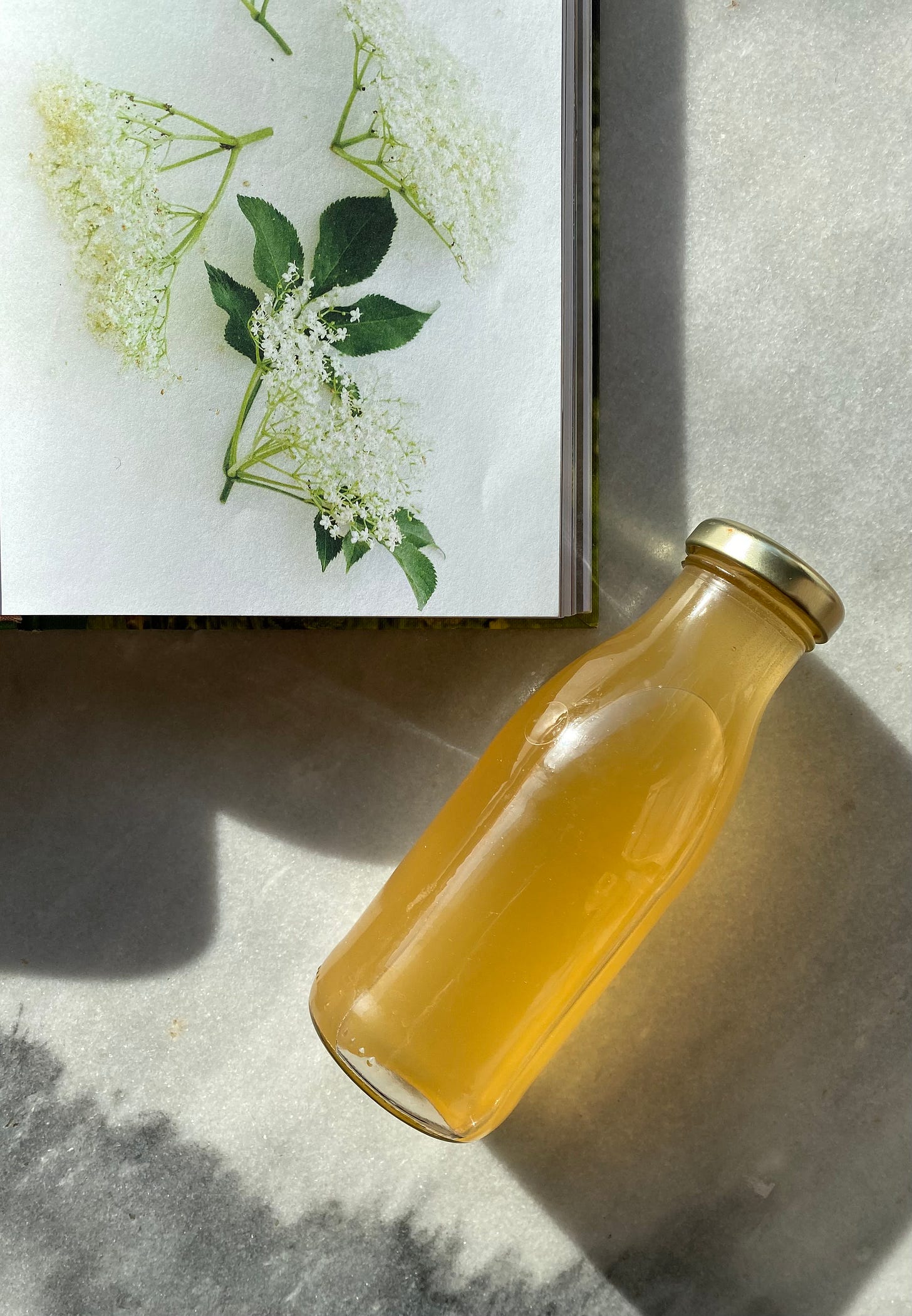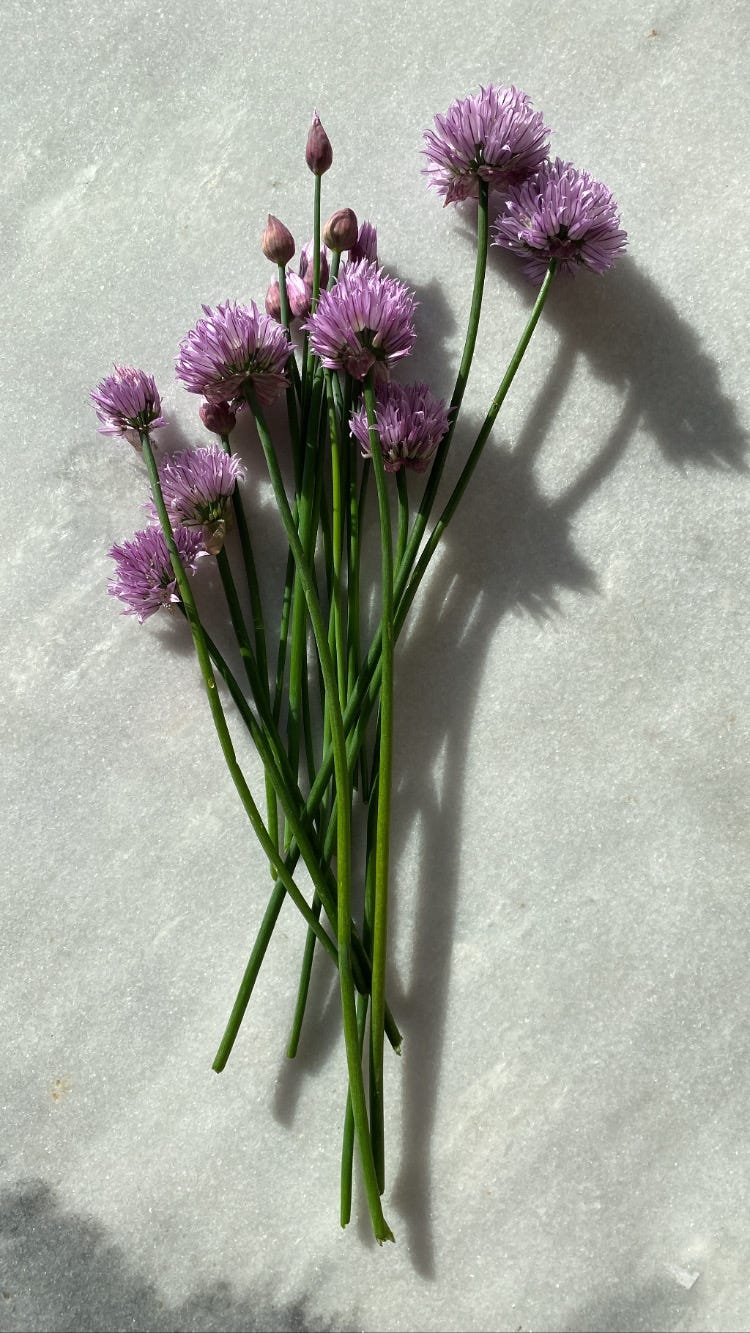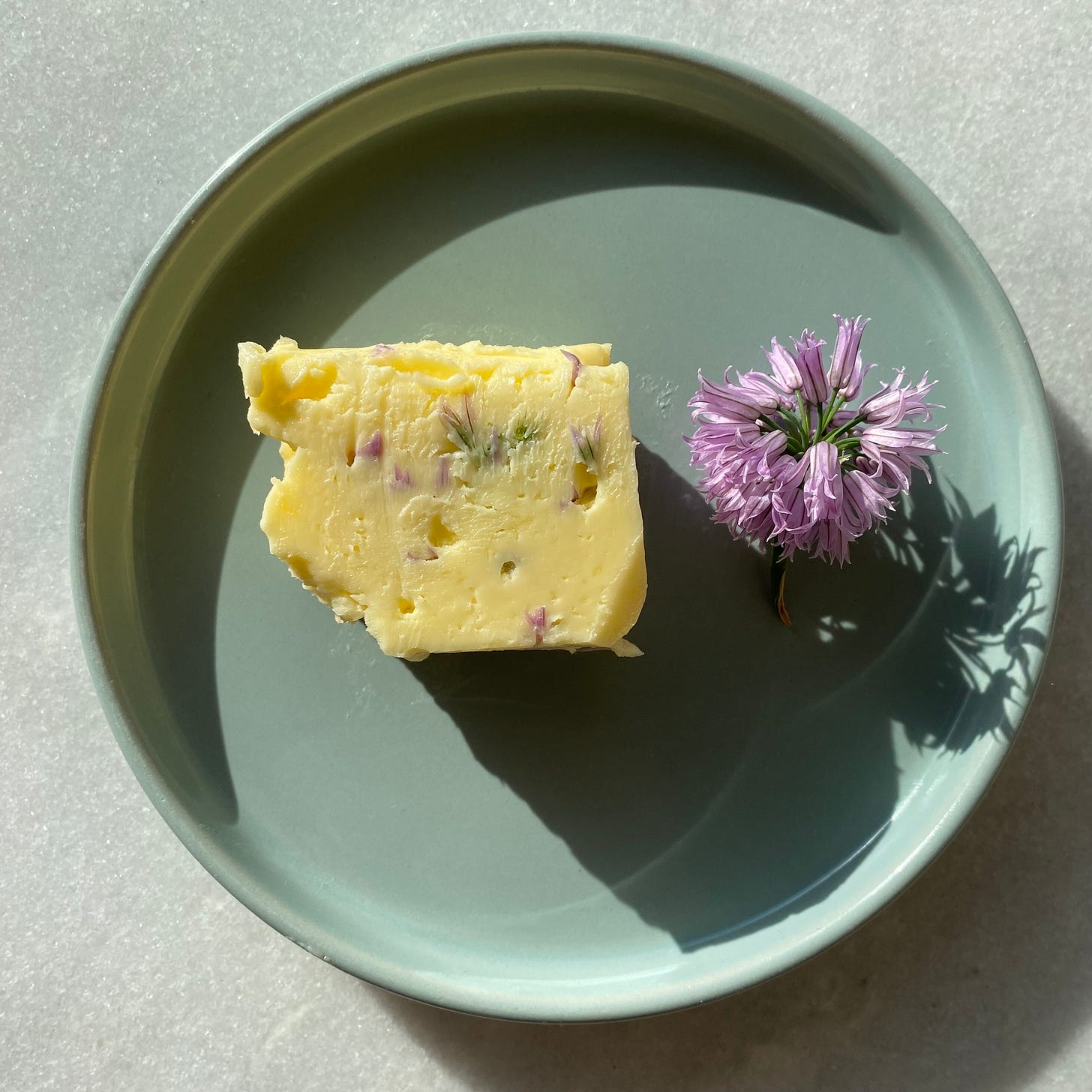Spring is in full bloom and it’s making me hungry.
Tiny chat about edible florals
The elder trees in my neighbourhood have been wafting their scent and proudly showing off their cream clusters of umbrella shaped blossoms to everyone that passes by. Giddy at the sight of early green buds a few weeks ago knowing they would change into speckles of fragrant and delicious petals. As many others I look forward all year to the start of elder season so I can continue my tradition of making elderflower cordial. This delicate floral also has a medicinal history. Personally I find it to be very soothing when suffering from a sore throat when you have the common cold and/or flu. Maybe it’s because I grew up with a mother who tried to cure us with broths, healthy teas and natural ingredients but the allure of foraging for your own medicin only makes it better by being so delectable.
My recipe is largely adapted from Leoniek Bontje’s book Wildplukken and a little mishmash of others you can easily find through your good friend; the search bar. Try to forage in areas where pesticides are not being utilised and steer clear of roadside finds, especially those near the highway. Always leave enough for the local animals, other foragers and of course your elderflower tree. In good conscience ask when you want to forage at private property and do read up on the local laws regarding this topic.
It’s best to pick on a warm and dry morning when the fragrant pollen are abundant on your flowers as opposed to when it has rained and the droplets washed off some of that precious aroma.
Elderflower Cordial
Ingredients:
1l cold water
7-10 elderflower heads
300g sugar
20g citric acid (naturally occurring/ organic acid for preservation)
1 lemon
Material:
sterilised bottles/jars
cheesecloth
sieve
1 small pot for making syrup
1 big sterilised glass jar
Place your foraged elderflowers in a clean pot and set it outside for a bit so unwanted bugs get the chance to escape. Please don’t wash your flowers because a lot of the taste will be removed. Separate the flowers / petals from the stalks and leaves as these are not edible. Pick out all the little critters that outstayed their welcome. Add separated flowers to your big sterilised jar.
Gently heat your water and sugar. Add citric acid and juice of your lemon. Some like to add slices of lemon or even the zest but I prefer the juice, to each their own.
You want the sugar to dissolve but not that your syrup ends up scorching your precious blossoms. Pour your syrup over your neatly cleaned elderflowers and let it infuse for 1-2 days, closing the top with a cheesecloth so it can breathe.
After minimum 1 day, maximum 2 days check on your elder concoction and place your cheesecloth over your sieve and squeeze out your elderflower cordial into a clean vessel and distribute among your sterilised bottles or jars.
That’s all there is to it, now you have your own appetising flower infused syrup for making thirst quenching fizzy drinks or botanical bakes.
Another little flower I’ve added to the kitchen as of late are these chive blossoms. My mom’s chives were flowering in her garden. Knowing I’d never miss an opportunity to incorporate florals in the kitchen, she gifted me some for making butter, another obsession of mine. These taste like chives’ delicate and subtle sister, so I wouldn’t use these for desserts. For your saltier dishes these are just the most dainty and hearty sprinkle.
Chive flower season doesn’t last very long so enjoy while you can. Good news, onions also produce look-a-like flowers later in the season but in a beautiful white variant. I will notify my mother so she can save those for me as well.
I know this is a departure from my regular paint updates but here’s me testing out the waters and hoping you’re a foodie and botanical confidante I can share this interest of mine with.
If you’d rather see me make a separate space for food and foraging related topics, feel free to let me know. So we can best navigate this together.
Best wishes,
Lau




